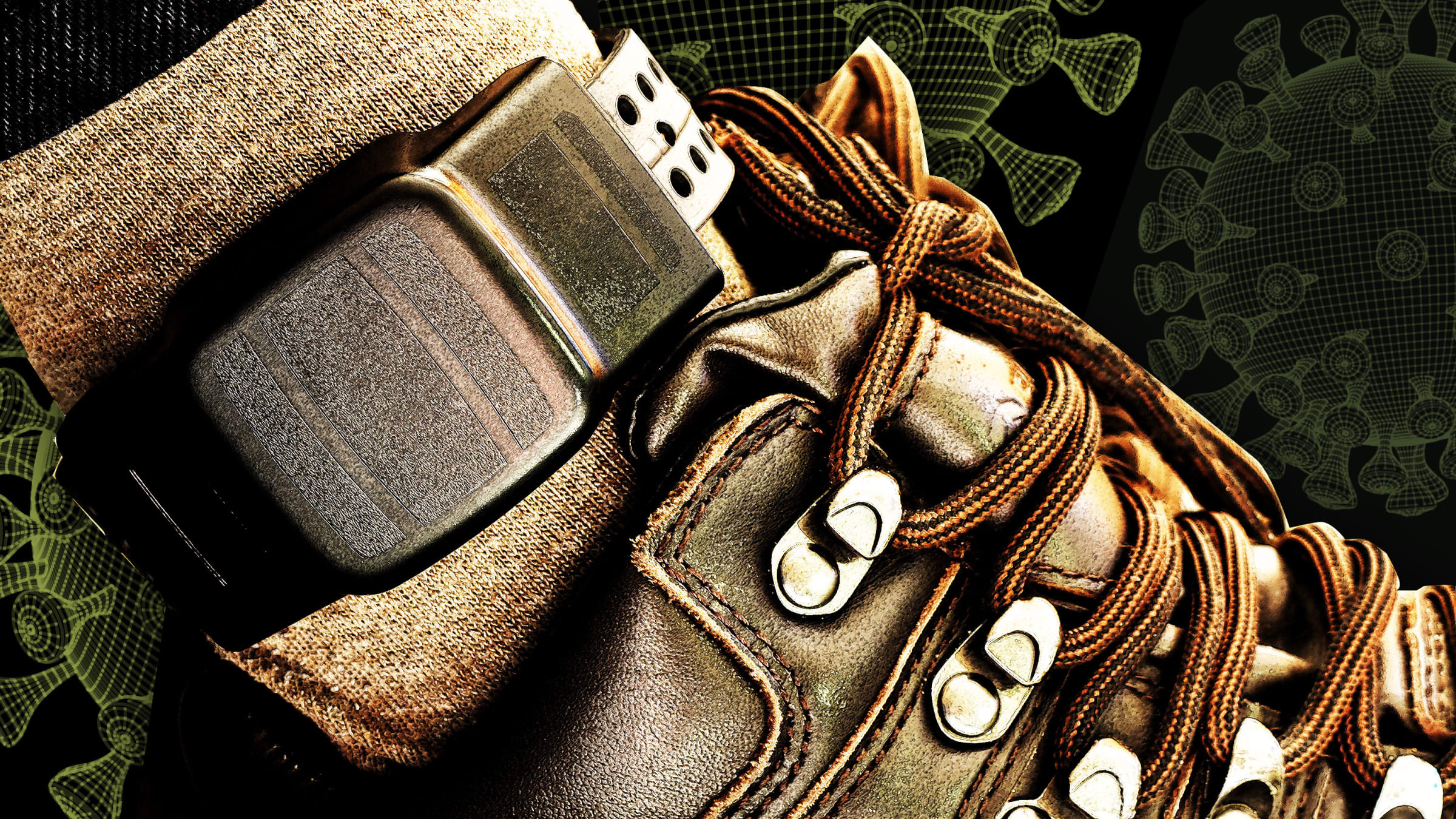The Special Misery of House Arrest During a Pandemic

Photo Illustration by Sarah Rogers/The Daily Beast/Photos Getty
“It’s happening almost everywhere right now, from Baltimore to Indianapolis to the immigration detention system.”
For most of 2020, Chris, a father of three in Chicago, couldn’t leave his apartment: not to go for a walk, not to run errands, and not to take his son to the doctor when he broke his arm. And not because of quarantine. If Chris even stepped outside his front door without getting permission from authorities—a process that could take weeks—then the electronic monitor strapped to his ankle would notify law enforcement, possibly landing him in jail.
One day in August, Chris’s mother was out with his children when another relative suffered a health emergency, he says, forcing her to go to the hospital. She called Chris saying he had to come pick the kids up. “I’m a father,” he said of his decision to go get them, violating the terms of his house arrest.
The next night, squad cars pulled up to Chris’s home. He was handcuffed and taken to jail. Unable to afford bail, he has been locked up ever since, awaiting trial for gun possession, a nonviolent offense. Chris, who is Black, did not want his last name used for fear that it would affect his pending case.
This story was published in partnership with The Marshall Project, a nonprofit news organization covering the U.S. criminal justice system. Sign up for their newsletter here.
As the coronavirus has swept the nation, some judges and corrections officials have kept people charged with nonviolent offenses out of jails, which are superspreader zones. But as an alternative, they have significantly expanded the use of home confinement and electronic monitoring, especially for pretrial defendants who have not been convicted of a crime and who would not be confined at all if they could afford bail, according to dozens of interviews with judges, court watchers and defense attorneys.
“It’s happening almost everywhere right now, from Baltimore to Indianapolis to the immigration detention system,” said James Kilgore, a research scholar at the University of Illinois focusing on electronic monitoring and mass incarceration.
No nationwide database tracks this issue. But experts say that many people may be wearing an ankle bracelet indefinitely, due to pandemic-induced court closures and delays.
In Chicago, an epicenter of the rise in surveillance, the number of people on electronic monitoring jumped from 2,417 before the pandemic to 3,365 by mid-June and has remained in that range, according to Cook County Sheriff’s Office statistics. At one point, the agency ran out of ankle bracelets.
Yet the jail population dipped only briefly and returned to nearly as high as it was in March, raising the question of whether electronic monitoring is helping to reduce long-term overcrowding—or the coronavirus risk—behind bars. (At one point earlier this year, the Cook County Jail in Chicago was the worst COVID hotspot in the country.)
To advocates of electronic monitoring, it’s a useful alternative to incarceration that helps keep tabs on people accused of crimes, which they see as all the more urgent in a city with severe gun violence like Chicago. But critics say that because surveillance is seen as more humane than jail, judges are putting more people on it than they ever would have locked up. That trend, which has particularly affected the Black community, has been exacerbated by the pandemic and will only continue after it is over, they say.
“I’m worried that this is going to create a new normal of thousands of people being incarcerated at home,” said Matt McLoughlin, director of programs for the Chicago Community Bond Fund, an advocacy group that helps pay bail for low-income defendants.
Home incarceration comes with strict enforcement of rules, including many that make the routines of daily life virtually impossible. The Marshall Project interviewed six Chicagoans who have been on house arrest during the pandemic, all of them Black. They reported not being allowed to run errands for immunocompromised family members, do laundry in their own basement, or even go outside for a cigarette.
One, Darryl, 23, said the radius he was required to stay within was just 15 feet. (He did not want his last name used because he has a pending court case.) If he so much as took out the trash, he says, the box that was locked onto his ankle would start ringing and flashing red—and he’d be flooded with fear, desperate not to be sent back to jail.
The Cook County Sheriff’s Office does allow people on house arrest to venture out for select pre-approved reasons: primarily, going to work. But the agency in many cases denies defendants the kind of employment that involves moving from one location to another—and is often available to working-class people—such as construction, plumbing, or child care.
In an emailed statement, sheriff’s office spokesman Matt Walberg said the agency “routinely allows individuals movement to perform essential tasks” while acknowledging that any unapproved movement is considered a violation. The office educates people about how they can request movement and requires that they sign an agreement saying they will abide by the requirements, the statement said.
The sheriff’s office also said that one minor violation of home confinement typically does not result in a defendant being jailed; in most cases, a warning is issued, and the person is only arrested for repeated violations.
Walberg additionally noted that the agency could only respond more fully to questions about individual cases like Chris’s if they knew the identity of the individual involved.
Critics say that electronic monitoring makes it nearly impossible to get and hold onto a job, especially after potential employers receive a call from law enforcement to approve their movement. And it pressures people to plead guilty to charges that will stay on their record even if they believe they are innocent, just to get their ankle bracelet taken off and their case resolved.
What’s more, data that the Chicago court system produced for the years 2016 to 2018 show that electronic monitoring made no significant difference as to whether defendants would show up for court or get re-arrested.
These policies have not been eased to take into account the realities of the pandemic, critics say.
“We had hoped that judges and electronic monitoring officers would for the first time understand how oppressive being confined in your home is—because a lot of them are now going through a version of that themselves,” said Cathryn Crawford, litigation director at Lawndale Christian Legal Center, an organization that provides free legal services to juveniles and young adults.
To be sure, some Chicagoans on house arrest during the pandemic say it’s better than the alternative.
L., 51, who didn’t want his full name used because of a pending court case, said, “I’m home—that’s all that matters. I’m not in that jail on a hard-ass steel bed, in a cell infested with rats and roaches and water bugs, with people around me getting jumped all the time.”
But for Chris, being on house arrest during the pandemic was like “having double claustrophobia.” His psychologist told him to exercise, but he couldn’t even go to the park. He couldn’t visit with family or friends outdoors, and they couldn’t safely visit him inside. And if his partner or one of their children had brought the virus home, he knew he might get arrested for seeking testing or treatment.
In a way, being in jail now is a less psychologically confusing experience. “At least here,” he said, “you know that you are not free.”
